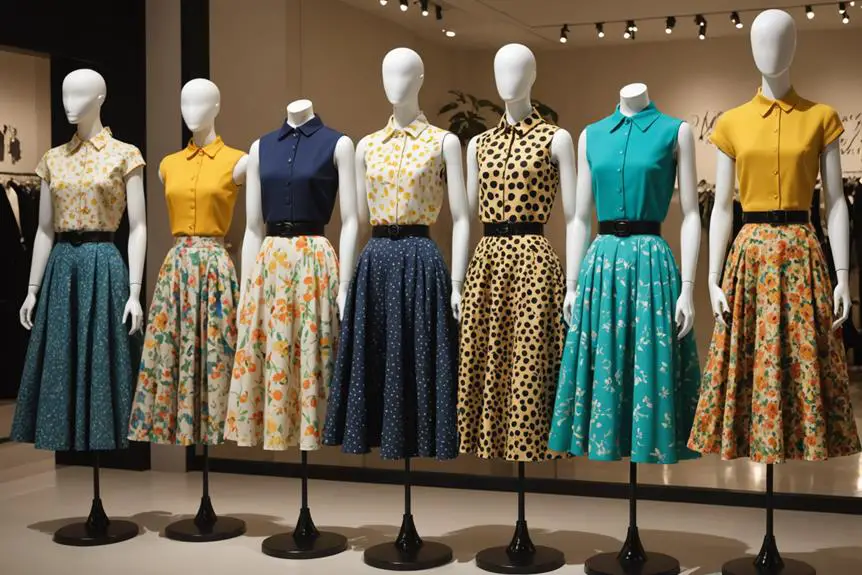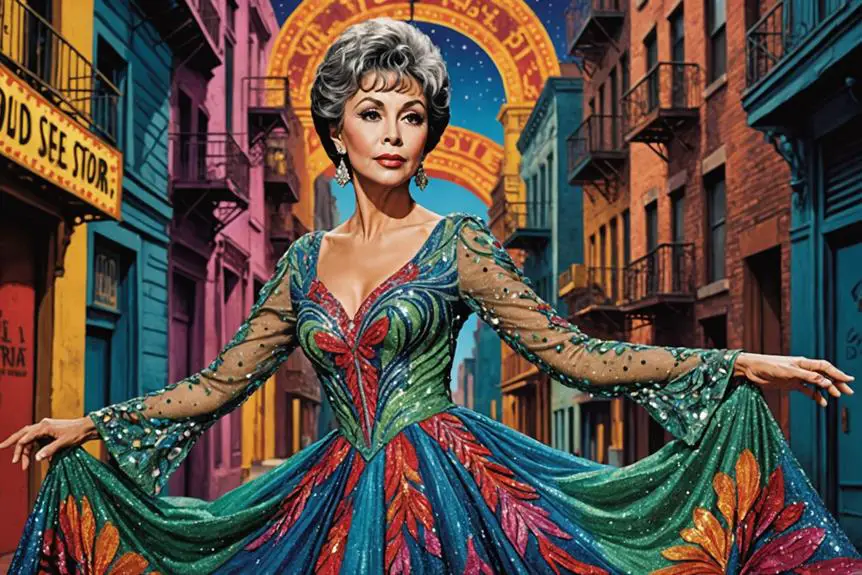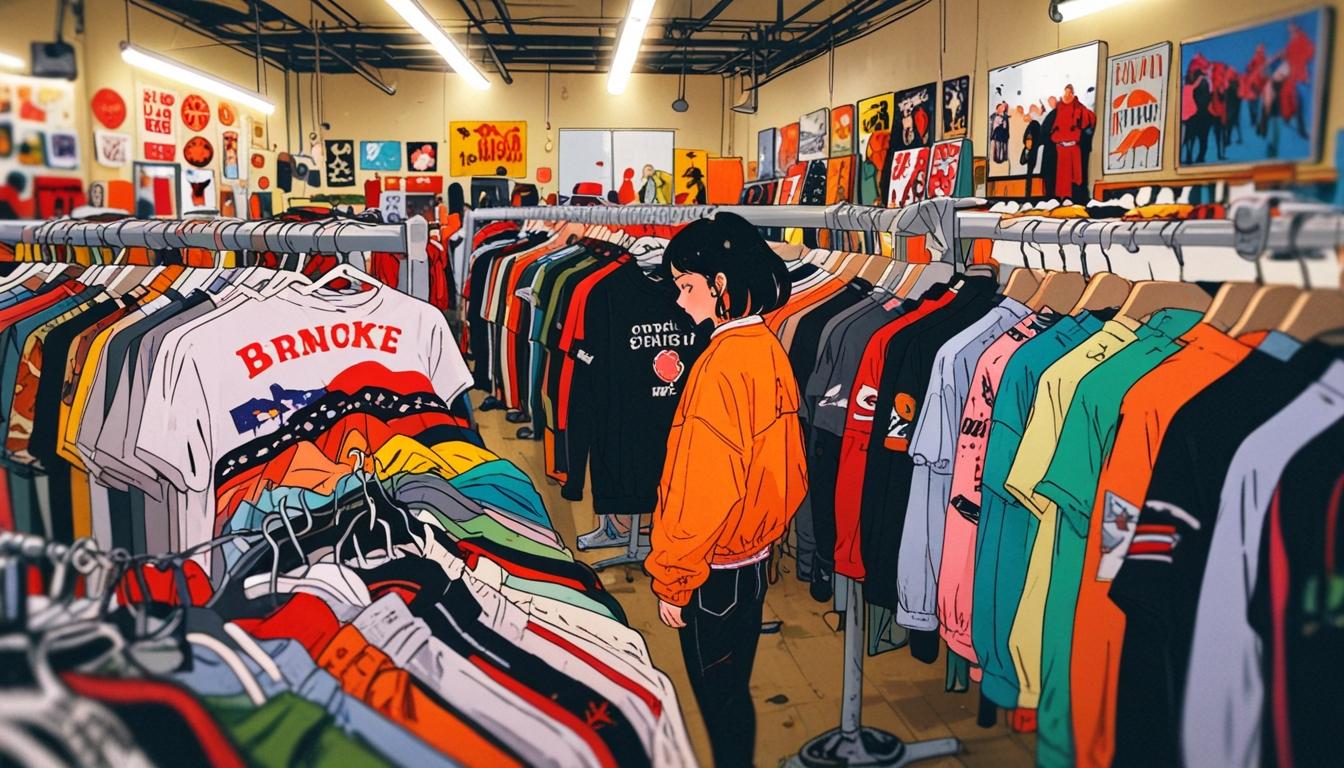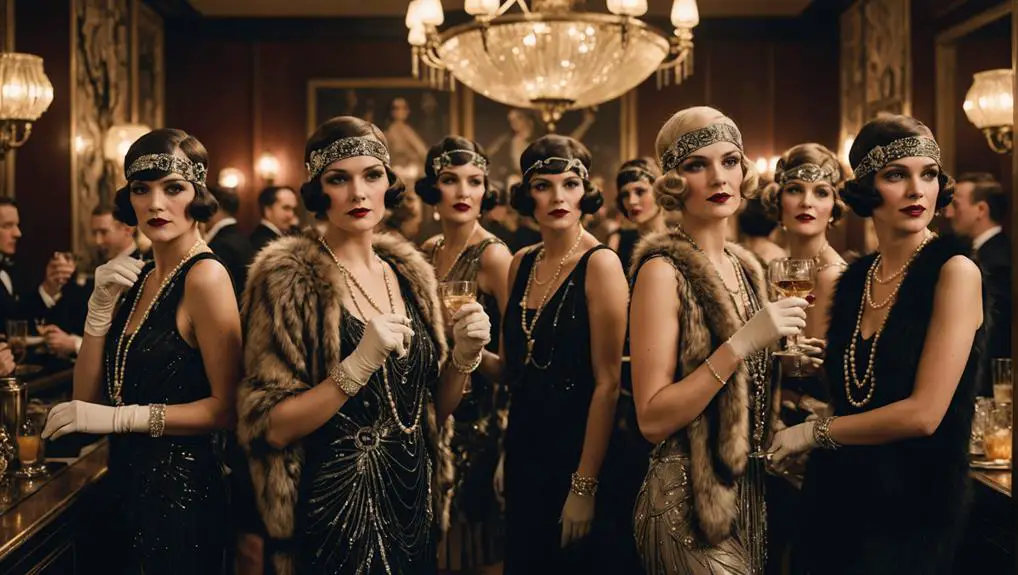You might find it interesting how the midi skirt, a staple in today's wardrobe, traces its roots back to the post-World War II fashion revolution. After Christian Dior introduced his 1947 New Look, this garment symbolized femininity in ways that both captivated and challenged societal norms. Yet, as the 1960s and 70s rolled in, the midi faced fierce competition from the miniskirt. So, how did this once-controversial piece reclaim its place in contemporary fashion, and what does it say about our evolving views on beauty and style?
Pre World War Two Influences
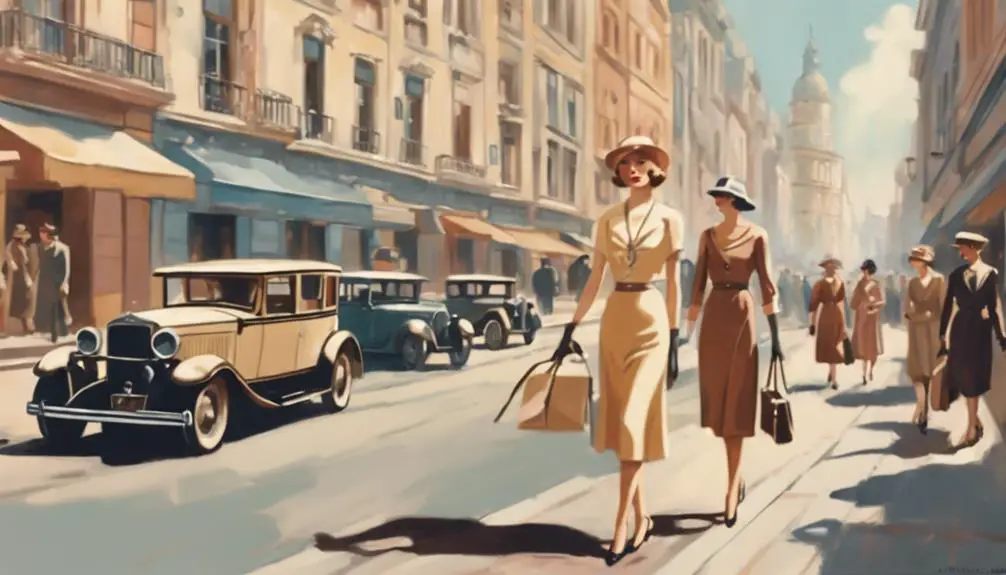
Before World War Two, fashion underwent a remarkable transformation that set the stage for the midi skirt's evolution. Think back to before 1910—women were stuck in floor-length dresses thanks to those pesky S-Curve corsets. They restricted movement and made fashion a bit of a chore, right? But then, in 1910, corsets started to relax, and hemlines rose to ankle length. Suddenly, women had a taste of freedom! This period also saw brands like Burberry beginning to evolve their designs, making clothing more practical and stylish for the modern woman, reflecting a shift towards comfort and functionality in fashion design overhaul in 2006 aimed to revitalize brand image post-negative associations.
World War One really kicked things up a notch. With so many women entering the workforce, practical clothing became a must. No one wanted to trip over their skirts while working, so shorter hemlines became the norm. This shift wasn't just about convenience; it was a statement of empowerment. Enter Coco Chanel, the game-changer. She popularized relaxed silhouettes that emphasized comfort and ease. Who wouldn't want that?
The Post-War Fashion Revolution
Catalyzing a dramatic shift in women's fashion, Christian Dior's 1947 New Look Collection redefined style with the introduction of the midi skirt. Imagine stepping out of the utilitarian wartime clothing into the glamorous world of the post-war fashion revolution! The midi skirt became a beacon of optimism, celebrating femininity and elegance, much like how Jean Paul Gaultier's innovative designs would later challenge traditional norms in fashion. You could almost feel the sigh of relief as women embraced this new style, leaving behind the austere silhouettes of the 1940s.
Dior's designs showcased cinched waists and voluminous skirts, a stark contrast to the drab looks of the previous decade. This wasn't just about clothes; it marked a cultural shift in how women saw themselves. With the end of World War II, there was a renewed focus on femininity and domesticity. The midi skirt, with its playful swish and graceful lines, became an iconic symbol of freedom and self-expression.
As you explore this era, you realize that the popularity of the midi skirt laid the groundwork for ongoing conversations about women's clothing, identity, and social roles. It was a time when fashion wasn't just fabric; it was a statement. So, what do you think? Could a piece of clothing really change how women felt about themselves? The answer is a resounding yes! The New Look didn't just alter wardrobes; it transformed lives, making the midi skirt an unforgettable part of fashion history.
The 1960s and 70s Controversy
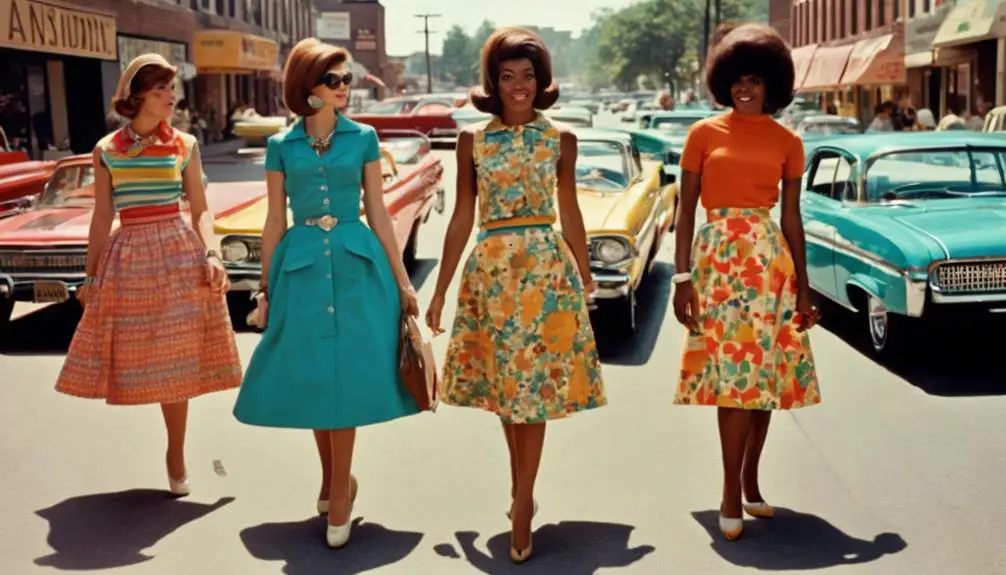
As the 1960s rolled in, the fashion landscape was buzzing with change, and the midi skirt quickly found itself at the center of a heated controversy. You probably remember the miniskirt that took the world by storm in 1964, right? Well, the midi skirt tried to step in as its older, more sophisticated sibling. But guess what? Many women weren't having it! By the early 1970s, protests erupted, especially in Washington, D.C., where slogans like "Up Your Midi" made it clear: ladies preferred their skirts above the knee. This clash in skirt lengths mirrors the fashion debates surrounding accessories like pearl necklaces, which also faced scrutiny as they evolved from vintage elegance to symbols of modern self-expression, reflecting the evolving tastes of women during this transformative era the cultural significance of pearls.
In 1968, Women's Wear Daily declared the midi skirt the hot new trend, and suddenly, department stores were stocking them everywhere. But hold on—polls showed that a whopping 83% of women still wanted their skirts shorter. Talk about a fashion face-off! The public criticism was intense. Even fashion icons like Coco Chanel called the midi awkward and impractical. Ouch!
The backlash didn't just stop at mean comments. The controversy actually led to a sales decline for many couture houses. Some even went bankrupt because consumer preferences were shifting back to those beloved miniskirts. It's wild to think how something as simple as a skirt could cause such a stir, right? The clash between the midi and miniskirt became a defining moment in fashion history, proving that style is often a reflection of what women truly want to wear. So, what's your take? Midi or miniskirt?
Midi Skirts in Contemporary Fashion
How have midi skirts made their way back into the spotlight of contemporary fashion? Well, they've become this super versatile staple that fits effortlessly into both casual and formal settings. Designers are getting creative with styles, offering everything from fitted to A-line silhouettes. You might have noticed bold prints and vibrant colors popping up everywhere, especially the trendy leopard-print midi skirt. It's like the MVP of your wardrobe—perfect for those urban outings!
What makes midi skirts so great is their adaptability. You can easily dress them up or down, pairing them with crop tops or tucked blouses to accentuate your waist. This polished look is perfect for brunch with friends or a night out. Plus, the inclusivity of midi skirts means they cater to all body types and personal preferences. Whether you're going for a chic office outfit or a casual weekend vibe, there's a midi skirt out there for you.
In today's fashion world, it's all about embracing diversity. Midi skirts reflect that trend, showcasing styles that fit everyone's unique flair. And let's not forget the fun of mixing and matching—think about all those stylish pairings you can create! So, if you haven't already, it's time to grab a midi skirt and rock it. You'll be strutting your stuff in style, feeling confident and fabulous!
Cultural Impact and Legacy
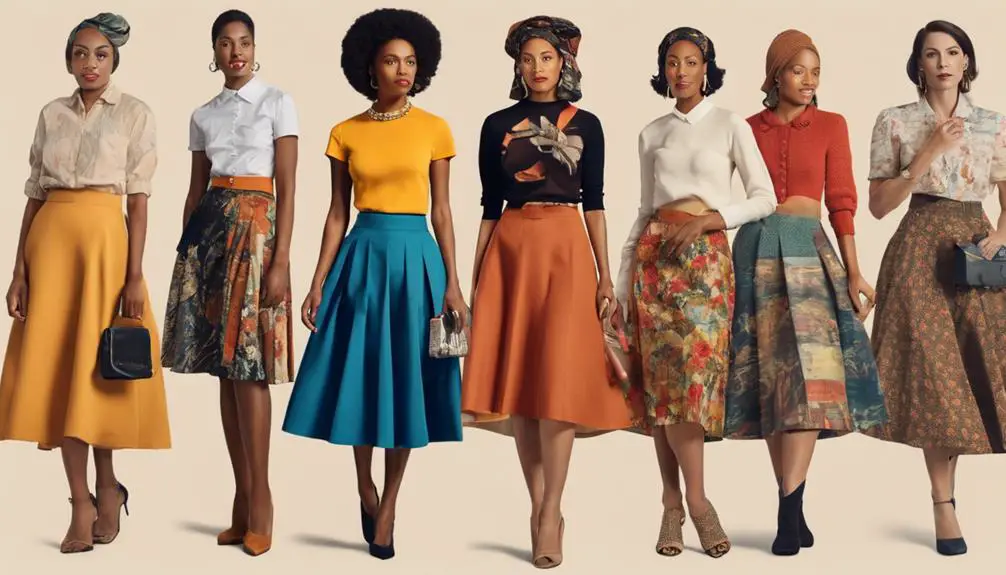
While the midi skirt may seem like just another fashion trend, its cultural impact runs much deeper, serving as a powerful symbol of women's liberation since the 1970s. You see, when women started rocking the midi skirt, they were challenging those traditional beauty standards that said a woman had to wear short skirts to look feminine. It was a bold move, one that sparked protests and playful slogans like "Up Your Midi." Talk about a fashion statement!
Of course, not everyone loved it. Cultural critiques came pouring in, with some calling the midi skirt impractical and unflattering. Even fashion icons like Coco Chanel rolled their eyes at it. But guess what? That backlash only made it more iconic! Its decline in popularity coincided with women embracing more liberated fashion choices, leaning towards pants instead.
But don't count the midi skirt out just yet! It's made a major comeback in contemporary fashion, proving that it can adapt and evolve. Today, you can pair it with almost anything, from crop tops to oversized sweaters. Isn't it amazing how something once deemed "out" can come back in style?
Frequently Asked Questions
What Is the History of the Midi Skirt?
The midi skirt's history reflects fashion evolution, showcasing length variations and cultural influences. You'll appreciate its diverse fabric choices and celebrity endorsements, while modern adaptations offer styling tips for age appropriateness and sustainable fashion across seasonal trends.
What Is the History of the Midi Dress?
The midi dress showcases diverse styles and fabric choices, influenced by designers and cultural significance. You'll find modern trends, celebrity favorites, and versatile styling tips for any occasion, ensuring age-appropriateness and seasonal adaptations.
Why Were Midi Skirts Popular in the 1970S?
Midi skirts became popular in the 1970s due to fashion icons embracing them, cultural influences from music scenes, and diverse fabric choices. They evolved into everyday wear, showcased on runways and in vintage collections, reflecting social movements.
What Does Midi Mean in Skirts?
When you think of midi skirts, think of a canvas where length variations and fabric choices play together. These modern interpretations, influenced by fashion icons, offer styling tips for seasonal looks, making them celebrity favorites everywhere.
